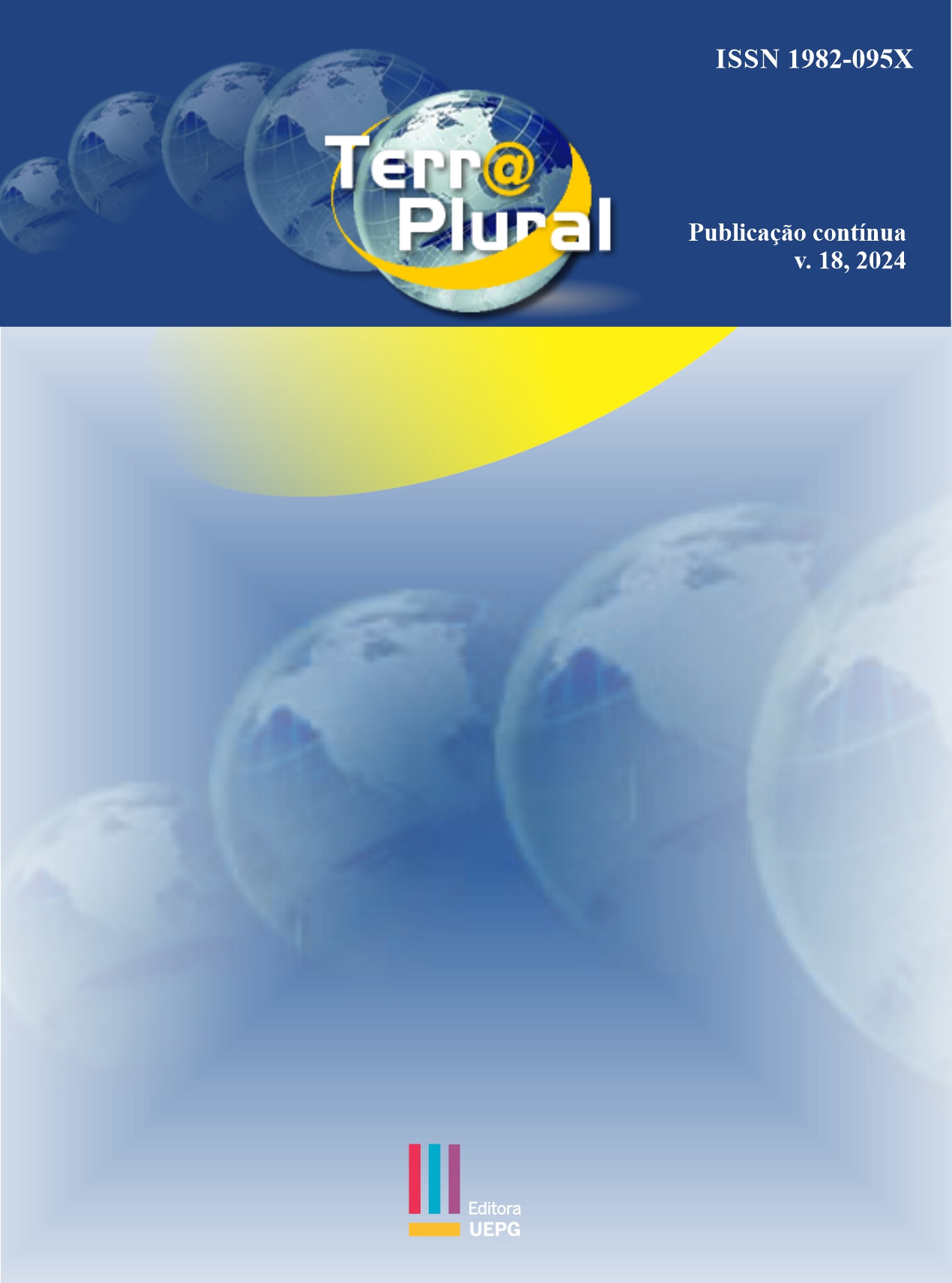Monitoramento aéreo da regeneração natural de área florestal impactada por incêndio
DOI:
https://doi.org/10.5212/TerraPlural.v.18.21888.002Palavras-chave:
QGIS, Veículos Aéreos Não Tripulados, Recuperação de Áreas Degradadas, índice de vegetaçãoResumo
o Cerrado apresenta anualmente inúmeros episódios de incêndios florestais, comprometendo a biodiversidade e paisagens desse bioma. O monitoramento de áreas degradadas pelo fogo conta com importante suporte de técnicas de sensoriamento remoto, a partir do processamento digital de imagens orbitais e suborbitais. Este estudo quantificou a regeneração vegetal perturbada por incêndios florestais por meio de imagens de alta resolução espacial obtidas por drones entre setembro de 2020 e agosto de 2021, em uma área de 20 hectares impactada pelo fogo em agosto de 2020. No programa Agisoft Metashape foram gerados ortomosaicos RGB para cada voo, em 3 blocos, com 4.800 m2 cada. Os pixels das imagens classificadas expressam o verdor do local, a partir do Índice de Vegetação de Excesso de Verde, obtido no programa QGIS. Após passagem do fogo e período de estiagem, a vegetação verde recobria 28,34% da área; em janeiro de 2021 após período de chuvas e regeneração natural da vegetação, a área estava recoberta por 81,7% de vegetação verde; após 4 meses a cobertura vegetal reocupou 53,36% da área avaliada. Um modelo simplificado de operações no QGIS foi desenvolvido para agilizar a coleta de dados. Apresenta-se uma proposta de rotina de monitoramento ambiental de baixo custo financeiro, utilizando drones e softwares gratuitos ou com versões de testes.
Downloads
Downloads
Publicado
Como Citar
Edição
Seção
Licença
Copyright (c) 2024 Larissa Dall’Agnol, Normandes Matos da Silva, Dhonatan Diego Pessi, Camila Leonardo Mioto

Este trabalho está licenciado sob uma licença Creative Commons Attribution-NonCommercial-NoDerivatives 4.0 International License.
Os autores mantêm os direitos autorais e concedem à revista o direito de primeira publicação, que permite o compartilhamento do trabalho com reconhecimento da sua autoria e publicação inicial nesta revista. Os autores autorizam a distribuição para indexadores e repositórios institucionais, com reconhecimento da sua autoria e publicação inicial nesta revista. Autores são estimulados a distribuir a versão on line do artigo (por exemplo, em repositórios institucionais ou em sua página pessoal), considerando que isso pode gerar alterações produtivas, bem como aumentar o impacto e as citações do artigo publicado.

Este obra está licenciado com uma Licença Creative Commons Atribuição 4.0 Internacional.















